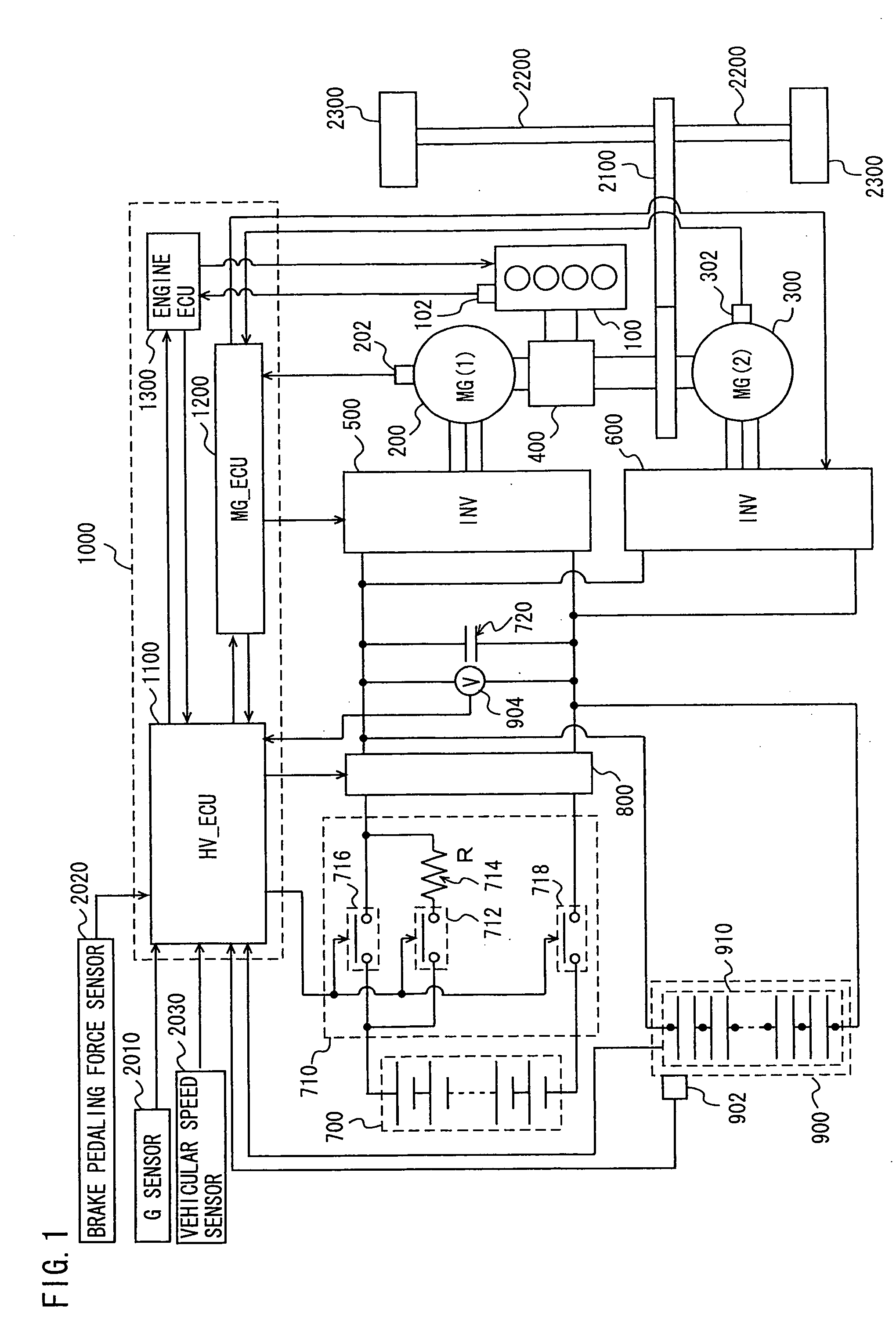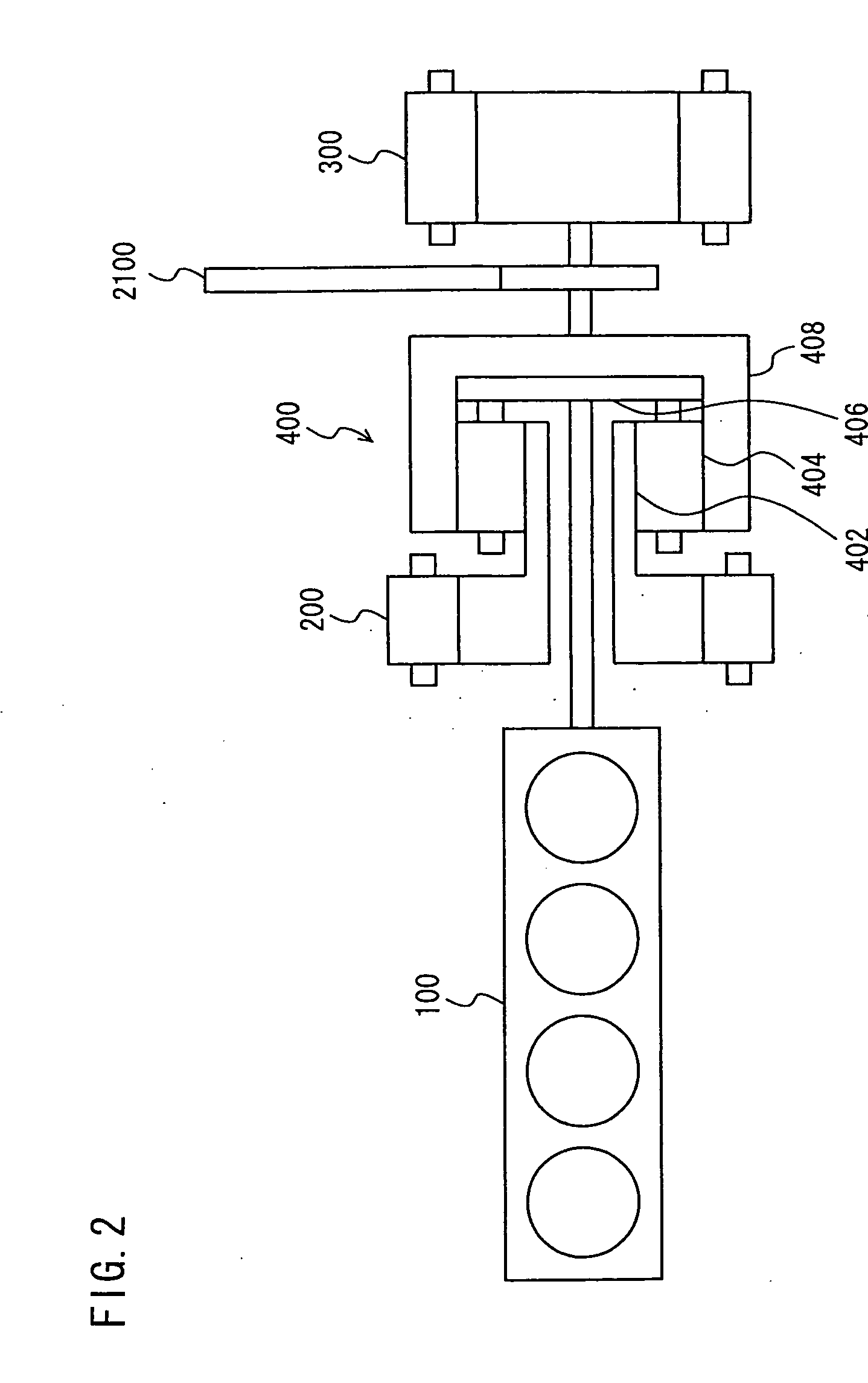Drive Device for Vehicle
a technology for driving devices and vehicles, applied in the direction of electric devices, gas pressure propulsion mountings, external condition input parameters, etc., can solve the problem of difficult suppression of the rotation of the drive shaft, and achieve the effect of accurately estimating the occurrence of the revers
- Summary
- Abstract
- Description
- Claims
- Application Information
AI Technical Summary
Benefits of technology
Problems solved by technology
Method used
Image
Examples
first embodiment
[0029]Referring to FIG. 1, description will be given below of a hybrid vehicle having a drive device mounted thereon in the present embodiment. The vehicle includes: an engine 100, an MG (abbreviating “a motor generator”) (1) 200, an MG (2) 300, a power split device 400, an inverter (1) 500, an inverter (2) 600, a battery 700, a converter 800, a capacitor 900, a speed reducer 2100, a drive shaft 2200 and drive wheels 2300. The vehicle travels with drive force from at least either one of engine 100 and MG (2) 300.
[0030]Engine 100, MG (1) 200 and MG (2) 300 are connected to each other via power split device 400. Power generated by engine 100 is split into two channels by power split device 400. On one of the channels, drive wheels 2300 are driven via speed reducer 2100 and drive shaft 2200. On the other channel, MG (1) 200 is driven, thereby generating electric power.
[0031]MG (1) 200 is a three-phase AC motor. MG (1) 200 generates the electric power by the power of engine 100, split b...
PUM
 Login to View More
Login to View More Abstract
Description
Claims
Application Information
 Login to View More
Login to View More - R&D
- Intellectual Property
- Life Sciences
- Materials
- Tech Scout
- Unparalleled Data Quality
- Higher Quality Content
- 60% Fewer Hallucinations
Browse by: Latest US Patents, China's latest patents, Technical Efficacy Thesaurus, Application Domain, Technology Topic, Popular Technical Reports.
© 2025 PatSnap. All rights reserved.Legal|Privacy policy|Modern Slavery Act Transparency Statement|Sitemap|About US| Contact US: help@patsnap.com



